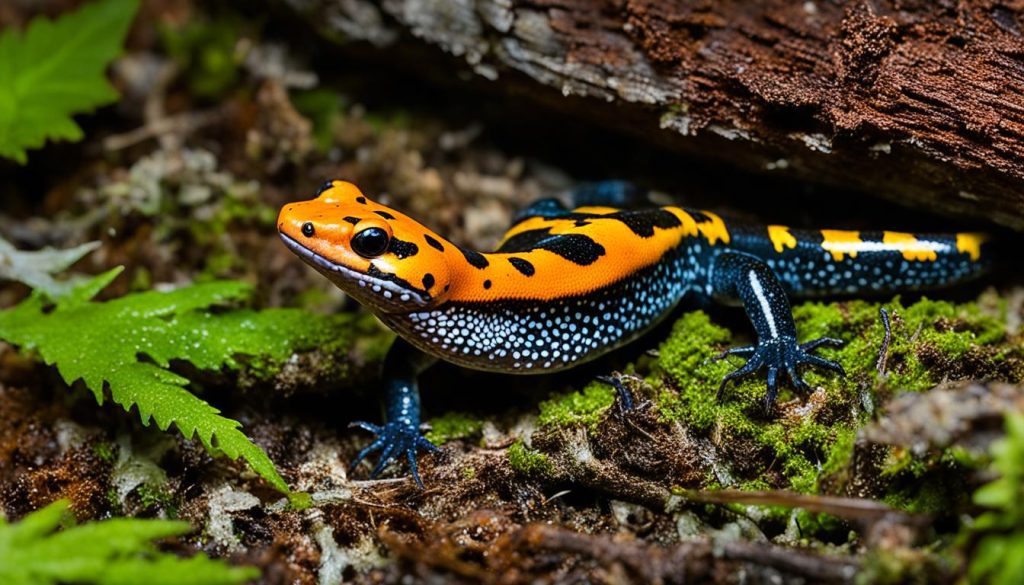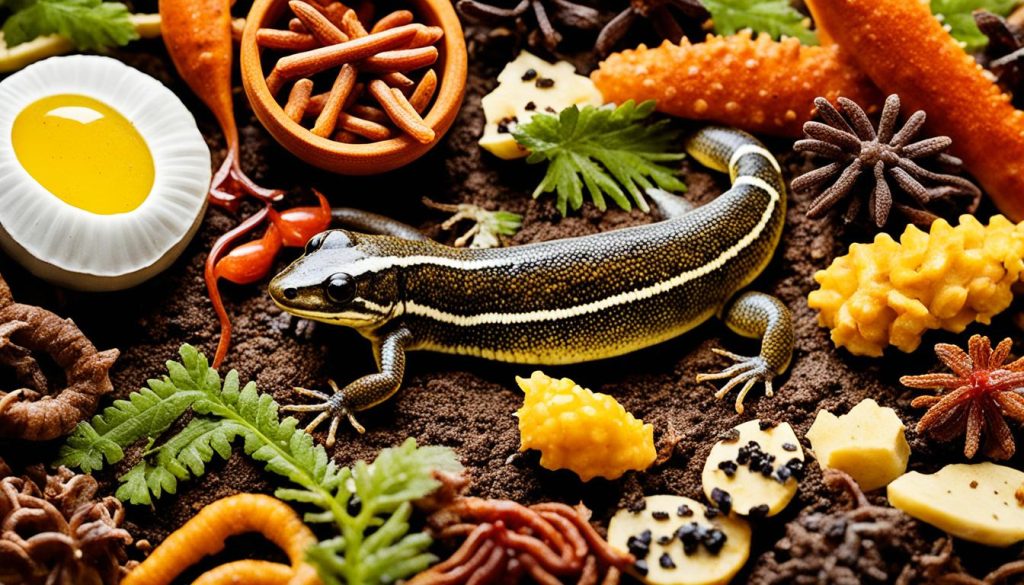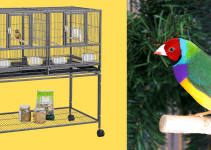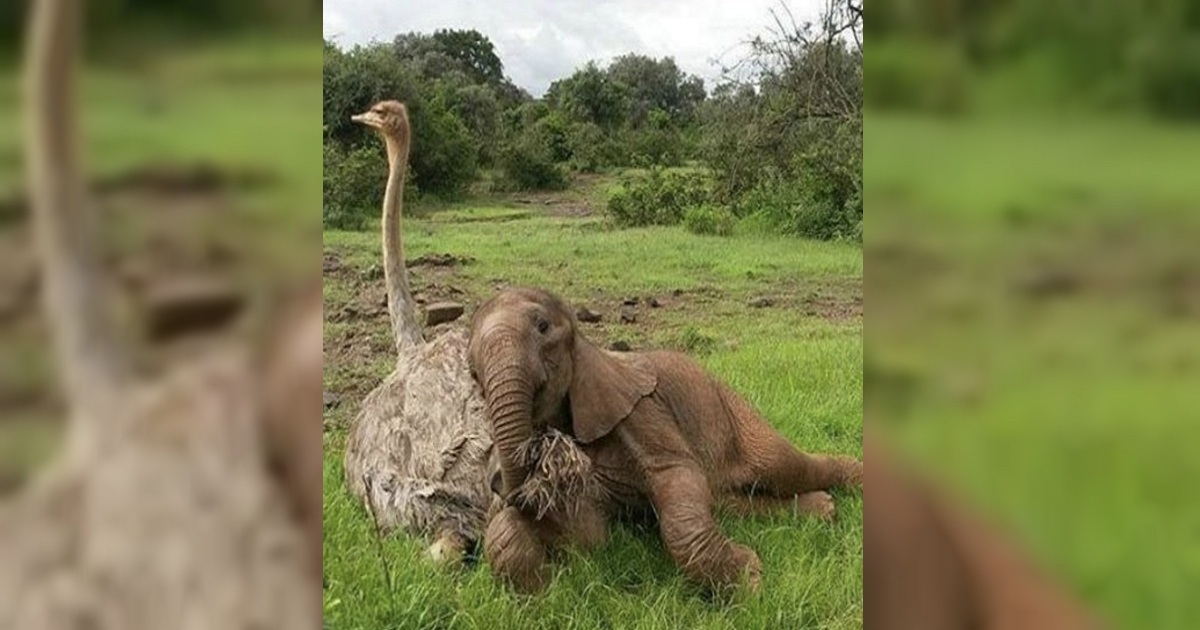Welcome to this fascinating exploration of salamander diets! If you’ve ever wondered what these amphibians feast on, you’re in the right place. Salamanders have unique feeding habits and a diverse menu that varies depending on their species and habitat. Join me as we delve into the intriguing world of salamander nutrition.
When it comes to their diet, salamanders are mostly carnivorous. They have a voracious appetite for a variety of small creatures such as mysis, buffalo worms, insects like crickets, maggots, and fruit-flies. Believe it or not, some salamander species even indulge in cannibalism by feeding on other salamanders. But their diet isn’t limited to just animal prey; some salamanders also have a taste for algae and plants.
The types of food salamanders consume depend on their specific habitat. There are three main types of salamanders based on their living environment: aquatic, semi-aquatic, and terrestrial. Each has its own unique dietary preferences.
What Do Salamanders Eat
- Salamanders are primarily carnivorous, but some species also eat algae and plants.
- Their diet consists of small animals such as insects, worms, and even other salamanders.
- The type of food salamanders eat depends on their habitat.
- Aquatic salamanders prey on snails, crayfish, and worms.
- Semi-aquatic salamanders feed on insects, worms, frogs, and even other salamanders.
Salamanders Diet By Types
When it comes to the diet of salamanders, it is important to understand that the type of habitat they live in plays a significant role in determining their food preferences. There are three main types of salamanders based on their habitat: aquatic salamanders, semi-aquatic salamanders, and terrestrial salamanders.
Aquatic Salamanders:
Aquatic salamanders, such as the common mudpuppy, have a diet primarily consisting of aquatic organisms. They feed on snails, crayfish, and worms that can be found in their aquatic environment. These salamanders have adapted to their watery homes and have specialized feeding habits that allow them to efficiently capture their prey.
Semi-Aquatic Salamanders:
Semi-aquatic salamanders, like the red salamander and tiger salamander, have a more diverse diet compared to their aquatic counterparts. They are known to consume a variety of food sources including insects, worms, frogs, and even other salamanders. These salamanders have a combination of aquatic and terrestrial habits and can be found near bodies of water as well as on land.
Terrestrial Salamanders:
Terrestrial salamanders, such as the clouded salamander, primarily inhabit land environments and have adapted to feeding on terrestrial prey. They rely on their excellent sense of smell and sight to locate their food. Their diet consists of termites, ants, centipedes, millipedes, and other arthropods that can be found on the ground.
Understanding the dietary preferences of different types of salamanders is crucial for their conservation and care. By providing them with the appropriate food sources, we can ensure their well-being and contribute to the preservation of these fascinating creatures.
How Do Salamanders Hunt?
Salamanders are skilled hunters, utilizing various techniques to capture their prey. With their well-developed sensory nodes and exceptional night vision, they are well-equipped for hunting in their natural environment. Salamanders employ a combination of different hunting methods and rely on their sensory abilities to locate and capture their prey.
One hunting technique salamanders use is the detection of sound wave vibrations. They are highly sensitive to vibrations in the water or on land, allowing them to pinpoint the location of potential prey. This ability helps them locate small organisms, such as insects or other small animals, even in dark or murky environments.
Another hunting method salamanders employ is their visual senses. Although they are primarily nocturnal creatures, they can still rely on their vision in low-light conditions. Salamanders use their keen eyesight to track and spot prey, enabling them to effectively capture their target.
Once a salamander has located its prey, it captures it using a variety of techniques. One common method is a quick sideways snap of the jaws, seizing the prey in a swift motion. This rapid movement allows salamanders to catch their prey off-guard and prevents it from escaping.
Salamanders may also employ a stalking technique when capturing prey. By quietly approaching their target, they can get close enough to make a precise and swift bite. This strategy ensures a higher success rate in capturing prey.

When Do Salamanders Eat?
Salamanders have specific feeding patterns and are most active during the cooler periods of the day. They are primarily nocturnal creatures, meaning they are more active at night. During the day, you can often find salamanders hiding under rocks or in trees, conserving their energy for their nightly feeding expeditions.
When the sun sets and darkness settles in, salamanders emerge from their hiding places to search for food. This is when they go on the hunt for their preferred prey, such as insects, worms, and other small animals. Their feeding behavior is influenced by their natural instincts and the availability of food sources in their habitat.
Understanding the feeding patterns and activity times of salamanders is vital for those interested in studying these incredible creatures or caring for them as pets. By aligning our observations and efforts with their natural behaviors, we can provide an environment that promotes their health and overall well-being.
How Often Do Salamanders Eat?
Salamanders have varying feeding frequencies depending on factors such as the season, food availability, and their specific needs. Understanding their feeding habits is crucial for providing proper care, especially for pet salamanders.
During the winter months, when temperatures drop and food becomes scarce, salamanders tend to eat less frequently. Their metabolic rate decreases, and they conserve energy by reducing their feeding activity. However, it’s important to remember that individual salamanders may have different feeding patterns and preferences.
In contrast, during the summer when food is abundant, salamanders may have a higher feeding frequency. With a greater availability of prey such as insects, worms, and small invertebrates, they take advantage of the plentiful resources to meet their nutritional needs.
When it comes to pet salamanders, it’s essential to establish a feeding schedule that suits their specific needs. Depending on the species, some experts recommend feeding them 2-3 times per week, while others suggest feeding them daily. It’s important to observe their behavior and adjust the feeding schedule accordingly.
Remember, it’s crucial to provide a balanced diet that includes a variety of live food sources to ensure proper nutrition. Consult with a veterinarian or a knowledgeable pet store professional to determine the best feeding schedule and dietary requirements for your pet salamander.
Feeding Tips for Pet Salamanders:
- Research the specific dietary needs of your pet salamander species.
- Offer a variety of live food sources, such as insects, worms, and small invertebrates.
- Observe your pet’s feeding behavior to gauge their appetite and adjust the feeding schedule accordingly.
- Ensure the prey is an appropriate size for your salamander.
- Remove any uneaten food to maintain a clean and healthy environment.
By understanding the feeding frequency and needs of salamanders, you can provide optimal care for these fascinating creatures and enhance their overall well-being.

What Eats Salamanders?
Salamanders are not immune to predation and have several natural enemies in their ecosystem. These predators play a crucial role in controlling the population of salamanders and maintaining the balance of the ecosystem.
Among the predators of salamanders are various animal species. Predatory fish, such as bass and trout, feast on salamander larvae and adults found in aquatic habitats. Damselfly larvae, known as naiads, are also voracious predators of salamander larvae.
Giant water bugs, also known as toe-biters, are formidable predators that prey on a wide range of aquatic organisms, including salamanders. These large insects have powerful front legs that allow them to capture and immobilize their prey with ease.
Snakes, such as garter snakes and water snakes, are skilled predators that feed on salamanders. They locate salamanders using their acute sense of smell and swallow them whole.
Birds, including herons, kingfishers, and owls, are opportunistic hunters that prey on salamanders. They detect salamanders by sight or sound and use their sharp beaks to capture and consume them.
Various mammals also pose a threat to salamanders. Humans, raccoons, opossums, coyotes, and badgers are known to consume salamanders when they come across them.
In addition to these predators, some salamanders exhibit cannibalistic tendencies, feeding on smaller salamanders. This behavior is commonly observed in certain species, especially when resources are scarce.
Conclusion
After exploring the fascinating world of salamander diets, it is clear that these amphibians have a diverse and interesting palate. Salamanders are primarily carnivorous, feasting on a variety of small animals including insects, worms, spiders, and even other salamanders. However, some salamander species also incorporate algae and plants into their diet.
Understanding the dietary preferences of different types of salamanders based on their habitat is crucial in providing the best care for these unique creatures. Aquatic salamanders, such as the common mudpuppy, thrive on a diet of snails, crayfish, and worms. Semi-aquatic salamanders, like the red salamander and tiger salamander, have a menu that includes insects, worms, frogs, and occasionally other salamanders. Terrestrial salamanders, such as the clouded salamander, have a preference for terrestrial arthropods including termites, ants, and millipedes.
Salamanders play a vital role in the ecosystem as they regulate the population of small organisms and act as a food source for other animals. For pet salamanders, it is crucial to provide them with a proper diet consisting of appropriate live food sources. This ensures their optimum health and well-being.
The diet of salamanders is a fascinating subject that sheds light on the complex dietary preferences of these unique creatures. By understanding and providing for their dietary needs, we contribute to their care and conservation efforts, ensuring their continued presence in our natural world.






